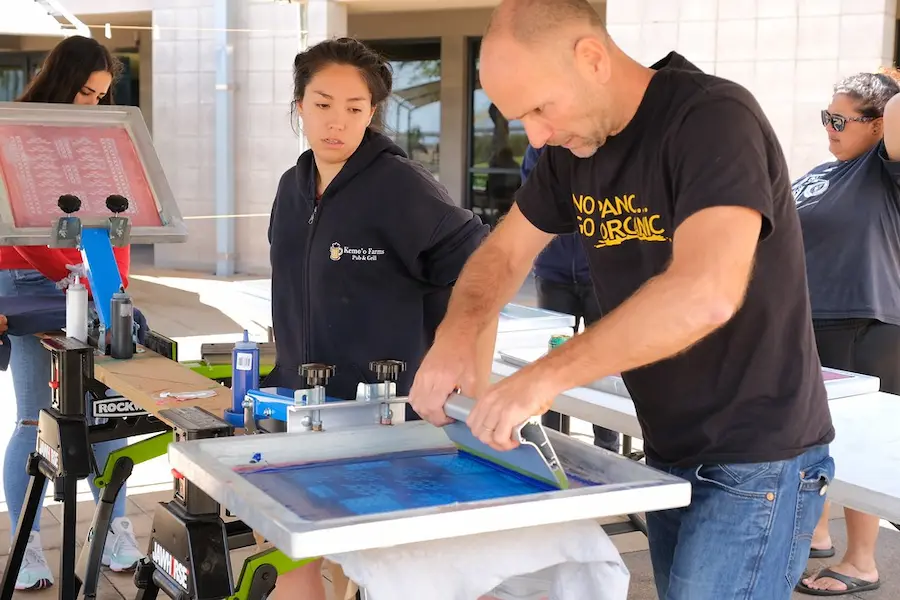Before you go out and order a custom t-shirt, there are several factors to consider. These factors include pre-planning, design, sizing, ink, and quality. Keeping these factors in mind will make the process much easier and less stressful.
Table of Contents
Pre-Planning
Before beginning the printing process of your T-Shirt, there are a few things that you need to consider. You should know where to get the raw materials, and if you’re running a small business, you will need a business license. Also, you need to think about the size and quantity of the shirt you plan to order. You can reduce the cost by ordering a larger quantity. And, you’ll want to consider your long-term business goals.
First, you need to prepare your design files. You can do this by submitting the files in a vector format. Common file formats include AI, PDF, and EPS. However, the most versatile format is PDF. When you’re designing a T-Shirt, make sure that you have the proper file format for the printer to process.
Sizing
If you’re planning on printing a big image on your T-Shirt, consider the following tips: Size your image to the size of your shirt. For example, if you’re planning on printing a logo or a sports team logo, you should make sure it’s at least 11 inches by 13 inches. In order to make this determination, line up the long side of a sheet of paper with the short side of the shirt.
Secondly, the size of the image or design should be proportionate to the size of the print area. If the image will appear on a long-sleeved T-shirt, the ideal size for the print is 2.5″ x 14″ to 3.5″ x 15″. The size of the image or design also depends on the type of textile that you’re printing on.
Modern Logo Design
There are many different kinds of modern logo designs. Some are sleek and minimal, while others are very elaborate. One type of modern logo design is a wordmark logo, which displays the full company name. These are used by many brands and new businesses. You can try incorporating a modern logo design into your business to increase its recognition and reach.
Ink
There are many factors to consider when printing a T-shirt. One of the most important is the type of fabric you want to use. Some types of fabrics are better for printing than others. Another is the number of colors that will be in the design. The amount of colors in a design will determine how much you will have to pay for the printing process.
The size of the design should also be a consideration. While you might be tempted to go for a one-size-fits-all design, this is not always feasible. If the design is small, it may not look right, and you should try to consider the size range before making a decision. If you are printing a T-shirt for kids, for example, a reduced size print may be sufficient. However, if you are going to print on a shirt that is a 5XL, you will need to enlarge the design.
Quality
It’s important to look for quality when printing a T-Shirt. Generally speaking, cotton-based garments look better after printing and age better than synthetic ones. However, it’s important to remember that cotton doesn’t guarantee superior quality. The quality of your print will depend on how well it’s positioned and if it’s printed on a fabric that breathes.
If your T-Shirt is to be printed with an image, make sure it’s in a high resolution. High resolution images contain at least 300 pixels per inch. That means that a 10-inch high print will need a file that’s 3,000 pixels high. However, if you’re only planning to print an image that’s smaller than 8×10 inches, you can get away with a 3.2-megapixel photo.
Return Policy
When you’re printing a T-Shirt, you’ll need to establish a clear return policy. This is important to consider when handling customer returns, but it can be easier than you might think. The following are some things to consider when creating a return policy: First, you’ll need to decide whether to cover the costs of shipping. In some cases, you might be able to refund the cost of the product, but others might not. Regardless, you’ll want to keep your margins in mind.
Having a clear return policy will help your customers feel confident in returning their items. A return policy should clearly specify the terms and conditions for returning an item, including the shipping costs and refunds. A return policy should also specify the return period, which is typically 15 to 30 days. Some businesses may even choose a longer period, such as 90 days. Either way, the policy should clearly state that you won’t accept returns after the return period expires.

